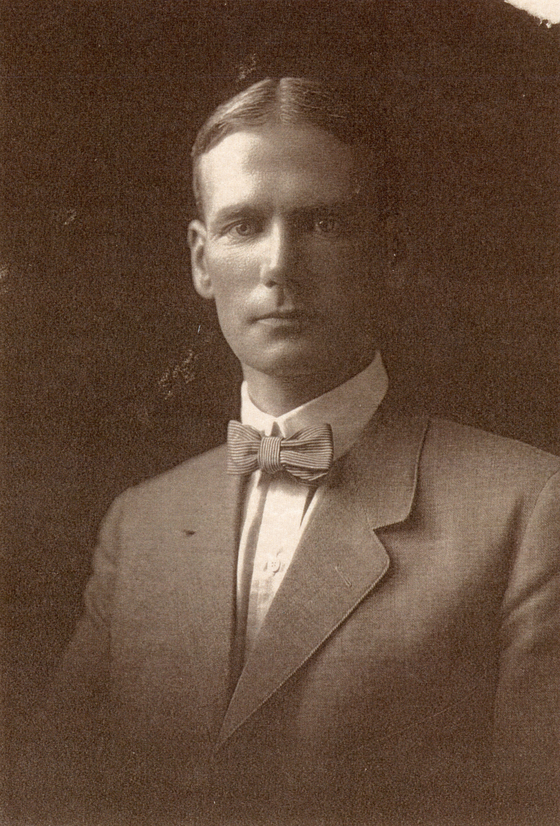#A 22-year-old young man got on a boat with his father. The place where I arrived with my father, a mining business man, was Joseon. This is how the relationship between Albert Taylor and Joseon, who began living in Seoul in 1897, began. It was 20 years later that I met my 14-year-old wife, Mary Taylor. The honeymoon salim started in a’small gray house’ near Chungjeong-ro 7-gil, Seoul.
March 1st Movement and Albert Taylor

Albert Taylor. The March 1st Movement and the Declaration of Independence were announced to the world. Photo Seoul
#28 February 1919. Albert, who was acting as an interim correspondent for the US Associated Press, headed to Severance Hospital after covering Gojong’s director. When his wife gave birth to a son and visited the hospital, he saw a roll of paper hidden in the hospital bed. Knowing how to speak Korean, he immediately recognized the’Declaration of Independence’. He wrote an article in a hurry and delivered the article and the Declaration of Independence to his younger brother, avoiding Japanese imperial surveillance, and the March 1st Movement is reported in the New York Times on March 13 of the same year.
This wasn’t the only thing the stranger in the wall did. On April 15 of that year, Japanese troops massacred residents because they had campaigned for national independence in Jeam-ri, Suwon (now Hwaseong City). The day after the incident, he visited the scene, photographed the burning village, and interviewed the surviving residents to inform the world of Japanese repression.
The man who made the March 1st Movement known to the world… Build’Dilkusha’

The old look of the Albert Taylor house,’Dilkusha’. Photo Seoul
Albert, who lived in Seoul, began to build a house by buying land in a place called’Ginkgo Tree Valley’ while walking along the fortress wall of Hanyang City. In Sanskrit, the name’dilkusha’, which means’palace of joy’, was also given. The red brick house was completed in 1924, but two years later, it was burned by lightning. Albert rebuilt the house in the same place in 1930.
The Japanese imperial pressure continued to him. In 1941, the Albert family was arrested by Japanese imperialism, and the following year they were forcibly deported. Returning home, he died in California six years later. Mary, her wife, visited Korea that year with her to commemorate the will of Albert who missed Korea during her lifetime. Albert was buried in the Yanghwajin Foreign Missionary Cemetery.
‘Dilkusha’ returns to citizens’ arms

The’Dilkusha’ exhibition hall is open to the public from March 1st. You can only watch it by online reservation. Photo Seoul
Dilkusha, which was neglected and owned by the state, was later used as an apartment house for the homeless people. It was in 2005 that we found the forgotten Dilkusha. Albert’s son asked Professor Kim Ik-sang of Seoil University to find the house where he lived as a child. A year later, in 2006, his son Bruce Taylor visited Seoul and visited Dilkusha after 66 years.
When even Bruce Taylor died in 2015, the following year, the city of Seoul began restoring its original form. As Dilkusha was registered as a nationally registered cultural property in 2018, the restoration speed accelerated. Dilkusha, located in Haengchon-dong, Jongno-gu, is a building with 1 basement level and 2 floors above ground, and the city of Seoul completed restoration work in December of last year. The Seoul Metropolitan Government decided to open the’Dilkusha’ for this March 1st. It’s been about 80 years since Albert was deported.
Shall we go back to the Dilkusha exhibition hall?

Relics of the time used by the Alberts. Albert’s granddaughter Jennifer Taylor donated the relics he was using at the time. Photo Seoul
The living room on the first and second floors was restored from the 1920s, containing traces of the Taylors’ lives. In the exhibition room on the second floor, it was possible to see the process of restoring the architecture of Dilkusha, including media activities. The Dilkusha exhibition hall, which is open from March 1st, is open every Tuesday to Sunday from 9am to 6pm. Admission is free, but you must make a reservation in advance to explore. The tour is held 4 times a day, and the number of people per session is 20. You can only apply through Seoul City Public Service Reservations.
Jennifer Taylor, Albert Taylor’s granddaughter and relic donor, said, “We hope this opening will provide an opportunity for Westerners who have joined the Korean independence struggle to be re-examined.” Seo Jeong-hyup, acting mayor of Seoul, said, “I will remember all those who have committed to independence through clusters related to the anti-Japanese movement near the Dilkusha exhibition hall such as Seodaemun Prison and Gyeonggyojang.
Reporter Kim Hyun-ye [email protected]
![]()
